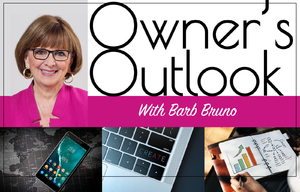As recruiters, we pride ourselves on our ability to clearly understand our clients’ talent needs. We partner with them to find, attract, and hire the hidden “A Players” in their industry. But today, recruiters everywhere are facing a new challenge. What happens when the playing field shifts in favor of the talent? Executive recruiters and our clients are feeling the pinch of a low-supply, high-demand candidate-driven market. We’ve all experienced market shifts before, but this one seems here to stay for a while. It’s a candidate’s world out there now.
The marketplace, especially in today’s fast-changing world, is always shifting. But here are a few basic principles that will help you adapt to a candidate-driven market:
Don’t just fill jobs; Bring top talent to the table. As the time-to-fill metric continues to lengthen due to demographic and low unemployment shifts, placing candidates will become tougher and tougher. The most successful recruiters will have anticipated this and will have a plan to deal with it proactively. They will spend more time bringing the most placeable candidate (MPC) to their client as well as understand each player’s next step in their desired career path. In this tightening market, recruiters will also find themselves with more job orders than they can handle. However, the placements will come more frequently from the MPC marketing call and finding the right next step for candidates. Your mission is still to find that exceptional “A” Player – but now you must spend the necessary time to successfully market them to targeted employers. It is hard work, but will also pay high dividends.
Find ALL available opportunities for top talent. Once you’ve found top talent, understand their dream job/next step in their career - be prepared to “wow” them. Don’t be content to simply take an “A” Player to the market, but instead be as thorough as possible, finding all available opportunities for him or her. In a sense, you’re demonstrating your value to your candidates in order to gain exclusivity. You can bring an extremely high value proposition as a recruiter when you can say to your industry’s top talent, “I’m going to go out there on your behalf and market you to all the prospective companies that make sense. I’ll bring you all the available opportunities that may be a good fit, and then you and I together can determine what is best for you and your next step of your career.”
Stop relying only on the easy button: Linkedin, Job Boards and Internal Database: employ alternative networking tools. Like last year’s favorite birthday gift, the In Mail Ads and job boards have lost their novelty. The top 10% of the talent pool is already gainfully employed and knocking it out of the park for their employers – they’re typically not actively looking for a career change. Job boards today are populated by “B” and “C” Players who are actively looking to make a change. Every recruiter across the country has access to these job boards and thus to these candidates. You’re not going to find anything special there. Be open to change. Remember, the last words of a recruiter about to go out of business are, “But that’s the way we’ve always done it.”
The truth is, the real “A” Players are invisible to job boards and are not answering LinkedIn In Mails as often. They don’t have their resumes posted and they aren’t monitoring job postings anywhere. You have to find new ways to reach them. The best recruiters are direct recruiting, and therefore, they are using alternative recruiting tools. I prefer LinkedIn, ZoomInfo, Jigsaw, and college and university alumni associations. This type of alternative tool will replace the job boards in their effectiveness very quickly in this shifting market. Conveniently for you as a recruiter, some of them are free, with additional feature upgrades for a nominal fee.
Invest time in coaching your pool of “A” Players. Once you have identified the top “A” Players in your industry, you need to become a trusted career coach and partner to your candidates. Like a great coach who communicates with and mentors his/her players every day, you need to be in contact with your most valuable talent on at least a monthly basis. Keep yourself in front of them so that they’re sure to remember your value. Keep them abreast of – and ahead of – market trends. Don’t let them forget for a moment who you are and what value you can bring to their career. Always inform your talent inventory about great opportunities and make it a point to provide information that will help them in their current and potential future jobs. In the end, the game will be won by the recruiter with the best, most informed talent pool. Develop yours, communicate effectively and often, illustrate your value, and you will have clients knocking down your door to get to your talent.
Only work with clients who want a close partner. We’ve all heard it: “I need you to search for this position, but we have our internal HR or recruiting staff working on it as well.” While we may have been willing to work under those conditions in a client-centric market, these are the clients we need to lose in a candidate-driven one. Winning recruiters should make it a firm rule to work only with clients who are 100% committed to you and to your efforts on their behalf. Recruiting should never be a race against a client’s internal HR personnel OR against any other recruiter they have engaged. That will almost always be a losing proposition. A team-based approach, in which a client and a sole recruiter work together, will deliver the best results for all parties involved: an efficient search and hiring process and a successful placement.
Work with clients on multiple openings. Recruiters in a candidate-driven market must be somewhat choosy. If a client will only give you one job order to work on while handing others to their internal staff or to competing recruiters, you may want to consider discontinuing the relationship. The clients we really want are those who trust us with multiple openings of the same type of search, allowing us to benefit from the synergy that arises from working on many similar opportunities.
Set expectations upfront. Part of being a great recruiter is being a great communicator. Set clear expectations upfront with clients and candidates. Explain your strategy clearly; it will be critical to your success. Discuss with hiring managers how you work, your role in the search, your responsibilities (and theirs), and the hiring timeframe. Make sure to define the types of situations and clients you will work with and those you will not.
When dealing with candidates, it’s even more important to define ground rules immediately. Explain your approach, agree on communication methods and expectations, and make sure the candidate understands your role as well as their own role in the search. Stress open and honest feedback. Always keep your eye on the prize: the exclusivity to work with them on multiple opportunities.
Join Jon Bartos for his Workshop. Click here to read more & Register >





